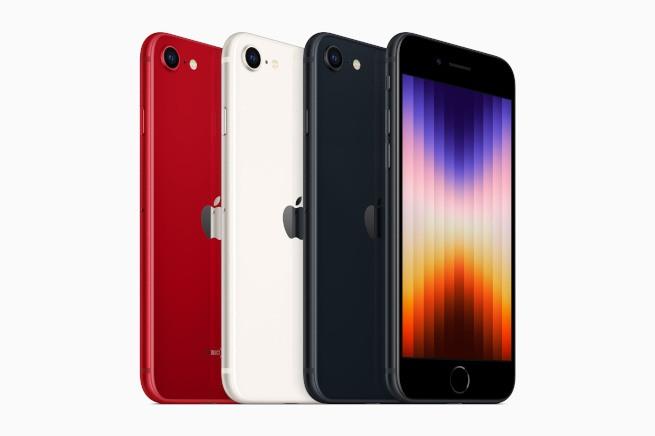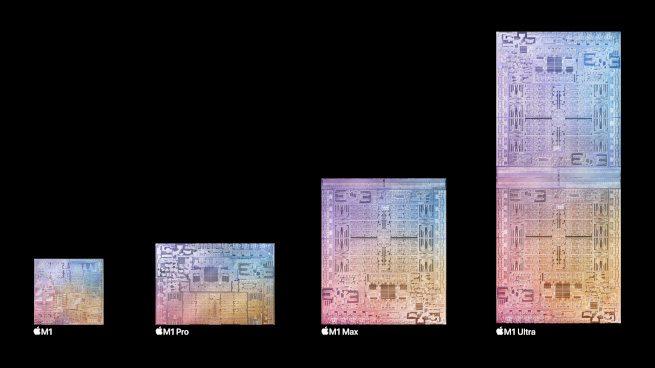
5 key things Apple gave us a peek into at its latest event
At its Peek Performance event, Apple unveiled a budget 5G iPhone, its fastest processor for personal computers and the new Mac Studio.
Apple has had a busy year so far, with a stellar earnings report in January just days after it became the world’s first company to cross $3trn in value.
Yesterday (8 March), the company gave the world a glimpse of its new products at its Peek Performance event, including the long-awaited budget iPhone with 5G, Apple’s fastest processor for personal computers, a new Mac and display, and much more.
“Apple continued to build on its momentum from the holiday season by rolling out more powerful versions of its current line-up of the iPhones, iPads and computers,” said Julie Ask, VP and principal analyst at Forrester. “Their products continue to impress at both ends – entry level and professional.”
Most of these products will be available for order in Ireland from 11 March and are set to hit stores on 18 March.
The iPhone SE gets a 5G touch
Apple is back with a new budget iPhone SE model, this time with a faster A15 bionic processor, 12MP camera and 5G. Now that the iPhone SE 2 has been discontinued, the new model is Apple’s cheapest smartphone – making it more accessible than the iPhone 13 and 13 Pro.
The new iPhone SE with 5G. Image: Apple
The latest iPhone SE features the familiar Home button and Touch ID. It comes with an upgraded 4.7-inch display with the same durable glass used in the iPhone 13 Pro and comes encased in aluminium.
Perhaps the biggest strength of the new iPhone SE, with a starting price of €529 in Ireland, is the fact that it comes with the same A15 bionic processor as the iPhone 13. Apple said that this makes it almost twice as fast as the iPhone 8 and greatly enhances camera performance as well as gaming and AR features.
With 5G becoming more prevalent around the world, it is bound to be a strong selling point for the new iPhone SE. But while it is the first time Apple has introduced 5G on a budget phone, its specifications suggest it does not support the fastest mmWave 5G band supported by the iPhone 13.
According to MacRumors, if the iPhone SE does not support mmWave, it will be restricted to the slower sub-6GHz 5G speeds, which are still faster than LTE.
US mobile networks such as AT&T and Verizon have been expanding their higher speed 5G networks, including the latest C-band spectrum that airlines raised objections to earlier this year.

Apple M1 Ultra processor
Apple also unveiled the latest in its M1 line of processors: the M1 Ultra. Made for the desktop and included in its new Mac Studio (coming up), the M1 Ultra is basically two M1 Max chips and supports up to 128GB of RAM.
The four M1 chips, including the M1 Ultra on the right. Image: Apple
Apple said that the M1 Ultra is about eight times the size of the original M1 chip and comes with 114bn transistors, the most ever in a chip made for a personal computer. It performance is powered by a 20-core CPU, 64-core GPU and 32-core neural engine that can help coders and designers work much faster.
Mac Studio and Studio Display
Complementing the M1 Ultra is the launch of Apple’s latest Mac desktop, the Mac Studio, which has the option of running either on the M1 Ultra or the M1 Max. Described by Apple as an “empower station”, the new computer comes with four high-speed Thunderbolt 4 ports, 10Gb ethernet port, two USB-A ports, a HDMI port and an SD card slot in the front.
The Mac Studio packs up to 128GB of memory and can support four 6K displays. It is primarily aimed at professionals working in programming or 3D design who need high CPU performance for demanding and visual tasks. It comes at a starting price of €2,349 in Ireland.
Mac Studio and Studio Display. Image: Apple
Apple also launched a new display, called the Studio Display, which boasts a 27-inch 5K Retina screen at a relatively lower price than other Apple displays of similar performance. The Studio Display also comes with a 12MP ultra-wide camera, six speakers and spatial audio to make video conferencing more immersive.
It will come with a stand included in the price of €1,799 – unless you want a height-adjustable stand.
The all-new iPad Air
Apple’s new iPad Air got similar upgrades to the iPhone SE, with a new processor, an ultra-wide front-camera and 5G. The fifth-generation device is aimed at content creators, gamers and students, and comes with a USB C-port that offers up to two times higher transfer speeds.
The new iPad Air. Image: Apple
This is the first time an iPad Air has been given one of Apple’s M1 chips, which is expected to give the device a significant performance boost compared to previous models – with up to 60pc faster CPU performance and two times faster graphics performance, along with all-day battery life.
The iPad Air also comes in a new array of colours and a 10.9-inch display with Touch ID enabled on the top button. The cheapest model starts at €709 in Ireland, with 5G models costing more.
iOS 15.4 and the iPhone 13 now in green
Apple also made a few other announcements at its Peek Performance event, including the new iOS 15.4 that is due to hit iPhones from next week. The new iOS comes with the long-awaited feature of Face ID that can work while the user is wearing a mask – a big selling point as masks continue to be used in daily life during the Covid-19 pandemic.
Apple said at the event that it is also working on a new Mac Pro, details of which will be announced in its next event later in the year. The 27-inch Intel-based iMac is also no more, disappearing from Apple’s online store after the event and paving the way for Studio Display.
iPhone 13 and 13 Pro in green. Image: Apple
The iPhone 13 and 13 Pro are still the same but will now come in shades of green – just in time for St Patrick’s Day.
Don’t miss out on the knowledge you need to succeed. Sign up for the Daily Brief, Silicon Republic’s digest of need-to-know sci-tech news.
}})